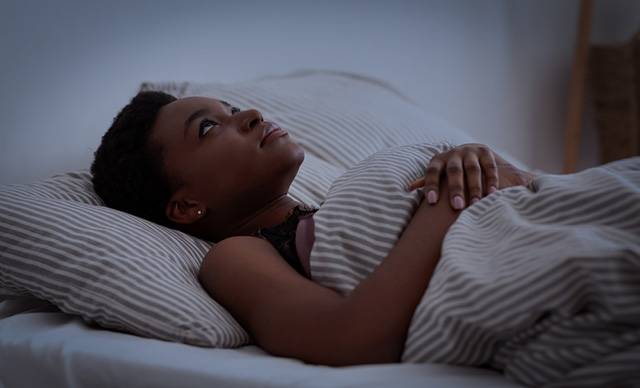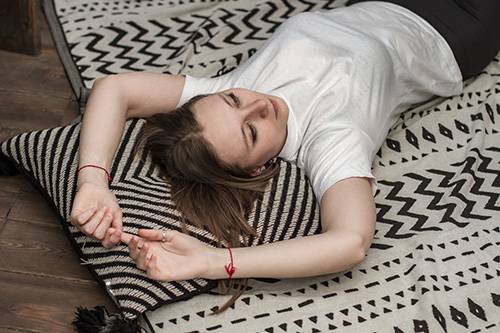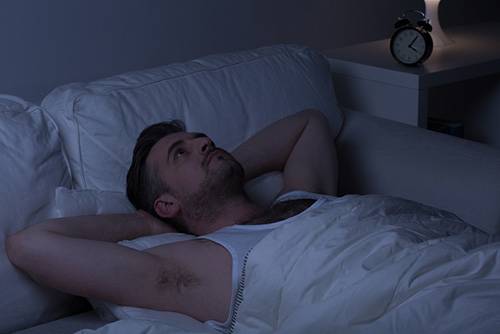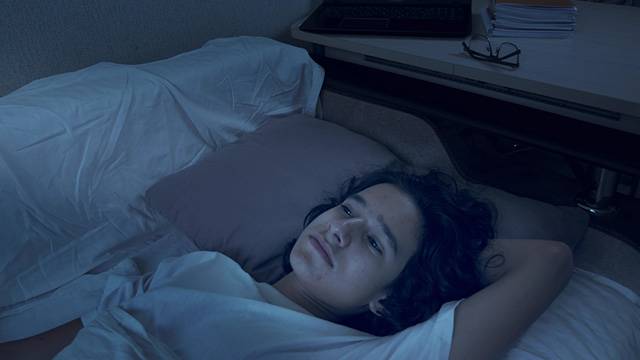Sleep is something many people lack. There is so much to do in the day and never enough time to do it. Most people find themselves scraping to catch some shut eye with a quick nap or during break hours. Doing this can flip your sleep schedule upside down, but sometimes you just need to give yourself some rest.
There are some people who find sleep in the most obscure places by sleeping with their eyes open. This allows them to be partially awake but still get the much-needed nap to continue their day.
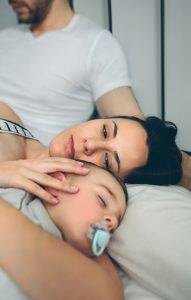
Some people feel safer and more cautious when catching z’s while their eyes are still open. Perhaps you’re in a public place or you’re watching over kids. You can still be somewhat alert without the issue of being fast asleep preventing you from acting quick.
Before we discuss exactly how you can train yourself to sleep with your eyes open, there are some warnings that should be addressed. Sleeping with your eyes open is not recommended at all. There are many long-term effects that can take place the longer you sleep with your eyes open.
Potential Issues
Eyelids were made for a reason. They help your eyes stay hydrated and clean when in contact with different particles. Dust, dirt, pollen are all kept out of your eyes when you blink. Closing your eyes also blocks out light, which means you have a darker environment to sleep in, there are fewer distractions, and your body is prodded into producing greater levels of melatonin.
Ignoring this natural function your body has can create complications for your eyes and perhaps even damage overall vision. The longer periods you sleep with your eyes open, the more susceptible they are to damage.
- Your eyes may be easily irritated since they are exposed to particles with no source of protection. You can build dust and dirt on top and within your eye which will bother you once you wake up and blink again.
- The longer your eyes are open, the more they will burn. The hydration on the surface of your eye will evaporate, leaving your exposed iris out in the open, with the risk of it beginning to burn.
- You’ll have blurry vision the longer you sleep with your eyes open. There is less protection and definite damage to the surface.
- Sleeping with your eyes open can make it easier for you to wake up, which isn’t always a good thing. Once you’re used to sleeping with your eyes open, you may not even realize that they are. You might see things in front of you and immediately wake up, or you become more sensitive to changes in lighting.
When Can You Practice Sleeping with Your Eyes Open?
You can practice sleeping with your eyes open practically anywhere. Whether you’re at home or outside, so long as you’re on your own you can give it a shot. You can even try to sleep for a couple of minutes at work if your head isn’t in the game. Anywhere which isn’t your regular sleeping spot is a good place to start so your subconscious mind does not get used to sleeping in bed with your eyes open. When you actually go to sleep for the night, it’s best to have your eyes closed.
Practice sleeping with your eyes open in areas where a quick nap can be taken. Long bus or train rides, in your workplace or office, outside in the park, or even in your living room when you’re surrounded by familiar belongings and confined in a safe space.
Step One: Relax Yourself
Firstly, you have to find yourself a secluded spot where you can get some uninterrupted rest. Make sure there are as few disruptions and distractions around you, so nothing bothers you while you sleep. Preferably where there are fewer people to catch you sleeping.
Now it’s best to practice progressive muscle relaxation. To do this, you tense up your muscles for a good ten seconds then slowly release the tension and relax them. Start top-down and then go bottom-up until all the muscles in your body are completely stress-free and relaxed.
This process helps indicate to your brain that your body is ready for rest and is actually used during military training. The more you practice progressive muscle relaxation before you sleep, the quicker your body will take it as a sign that you’re ready to rest.
Step Two: Slow Breathing
Slower breaths are key to putting yourself to sleep. Pumping in faster breaths gives more air and action to your lungs, waking you up and giving you the abundant oxygen supply your body needs to be up-and-running. Slower breaths mean less oxygen all at once, so your body winds down to preserve the oxygen in your lungs, using less of it over time.
You can slow your breathing by inhaling for 5 seconds, holding your breath, and exhaling for five seconds. This takes time to work, but once it does, you can feel your mind and body settling down for some rest. Practice this before sleeping at night as well so your body is accustomed to slower breaths being a signal for sleep.
Step Three: Focus
Your eyes capture and process everything going on around them, which is why it becomes so hard to sleep when they are open. Moving objects attract your line of sight and light keeps the mind working.
In order to sleep with your eyes open, you need to slow them down. Focus on something in front of you which is immobile and darker. Don’t let your eyes wander otherwise they will never settle down. Once you have permitted all your attention to be on one mundane item or spot, your mind will no longer be racing with information to be processed. This can help your mind drift into a restful state.
Step Four: Allow Your Train of Thought to Wander
The most important component to getting actual sleep is to not let your brain think. Lose control over your train of thought and allow yourself to blank out. Don’t focus too intensely on anything, no observations, commentaries, or thoughts about anything in front of you. If it helps, you can use music and noises to block out thoughts.
Initially, try to get a stream of happier thoughts running so your attention span can loosen and drift away, removing you from everything in front of you and permitting a peaceful state of mind.
To make better use of this training, think of it as professional daydreaming rather than sleeping. You’re no longer thinking, your mind and body are relaxed, and you’re getting the rest you need in order to start working again. The only difference is your eyes are open this time around.
Photo credit: Prostock-studio/Shutterstock; David Pereiras/Shutterstock;
Elena Kotova/Shutterstock; fizkes/Shutterstock; Photographee.eu/Shutterstock;
Ekaterina Vidyasova/Shutterstock

